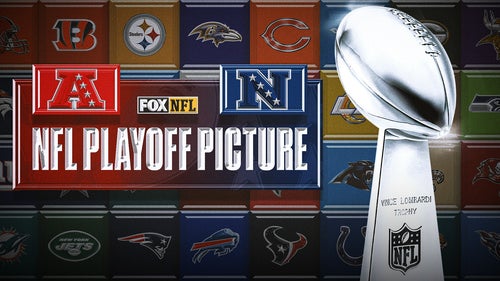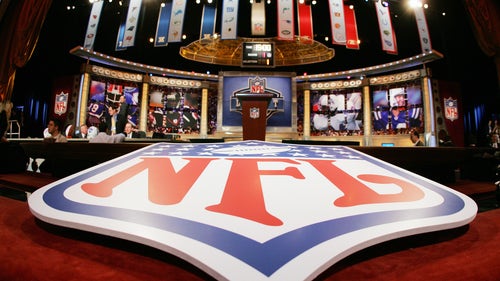
Fantasy Football Draft Strategy: the risk and reward of rookie running backs
So, you’re targeting a rookie running back in an upcoming fantasy football draft. Like so many, you’re eager to shred the wrapping paper and packaging to add a shiny new toy to your roster. David Johnson’s 12th-round average draft position last season be damned! You’ve lived and learn to strike while the iron is hot! In 2016, your rookie running back will be the difference between winning and losing.
Take a step back. Will he really?
As if fantasy football owners needed another visual aid reaffirming the NFL is a pass-heavy league, here’s a quick 2016 NFL Draft positional breakdown:
Be it a byproduct of a weak running back class after Ezekiel Elliott or NFL teams' comfort with their backfields, more running backs were selected in the final two rounds (9) than the first four rounds combined (7). The running back "flier" seemed to be a late-round trend. Why invest an early fantasy draft pick to scratch an itch?
Now, take a look at the fantasy football average draft position of rookie running backs over the past three seasons:
Note: 12-team, PPR leagues with 3,000+ MFL draft sample size
Of those 12 running backs, none of their ADPs were in the first four rounds. Top drafted rookie running backs, Eddie Lacy’s ADP was the fifth round in 2013, Bishop Sankey's ADP was the sixth round in 2014 and Todd Gurley – whose surgically repaired knee made owners nervous – fell to the fifth round last season.
Let’s also be honest about rookie running back ADP and likelihood of an owner hanging onto him an entire season. If an owner is invested in a rookie in the first six-to-seven rounds, they’re more likely to keep the underperforming back on their bench than send to him to the waiver wire. On the contrary, think of David Johnson’s ownership percentages as the 2015 season played out. With a lower ADP and behind Chris Johnson and Andre Ellington on the depth chart, owners were more likely to dump him because a 12th-round investment didn't sting as much. They weren’t – to steal a poker term – pot committed with a high-to-middle round pick. It turned out that holding D.J. for the season was the smarter play, but tell that to reeling fantasy teams who had players injured or on BYE and in need of waiver wire help. If they aren't posting double-digit fantasy points per game (PPR), your rookie running backs must show signs that 10-15 touches are possible in the near future to sacrifice those valuable roster spots.
As it applies to the 2016 NFL Draft class, the Cowboys' Elliott will be gone before the end of the first round. After he goes, how many rookie backs are truly in a position to make an immediate impact? For this exercise, let’s say "impact" is defined as they finish the season ranked in the Top 50 leading scorers among running backs.
To provide some context to the question, here are rookie running back production averages for those who finished in the Top 50 over the past three seasons:
Now, for my favorite reveal of this study. You know which rookie running back owns stats nearly identical to those averages? Ahem, the Browns’ Terrance West in 2014. He finished with 673 rushing yards and four touchdowns in 14 games.
Now in 2013, Lacy, Gio Bernard and Le'Veon Bell all scored more than 200 fantasy points. The Packers' running back was the only rookie back to carry the ball more than 250 teams over the past three seasons. He's also one of only six running backs to carry the ball more than 200 times in their freshman campaign. Now, 200 carries in a season is 12-13 per game, which isn't bad for a rookie. But think how many stars need to align for YOUR 2016 rookie back to crack the Top 50 leading scorers. If you are going to target a rookie running back after Elliott, recent history suggests aside from first-round picks those selected in the third, fourth and fifth rounds of NFL Drafts have produced the best numbers. That leaves you with ...
My advice is do your best to avoid over-valuing the rookie running back you really want. If you can wait until after the eighth round to take that flier, your veteran roster will be stronger. Also, it's worth noting if the rookie running backs noted above are still available after the 10th round, load up, but be smart about it and keep tabs on depth chart changes that occur during training camp. The FOXSports.com fantasy department will keep you up-to-date on those upgrades and downgrades.
In the meantime, be sure to check out John Halpin's recent rookie analysis feature for his thoughts on which running backs after Elliott he likes best. As always, our full 2016 fantasy football draft guide has everything you need to prep for upcoming leagues.
Be sure to check out my 2016 Rookie WR Risk vs. Reward Feature, which highlights some of the same themes.










